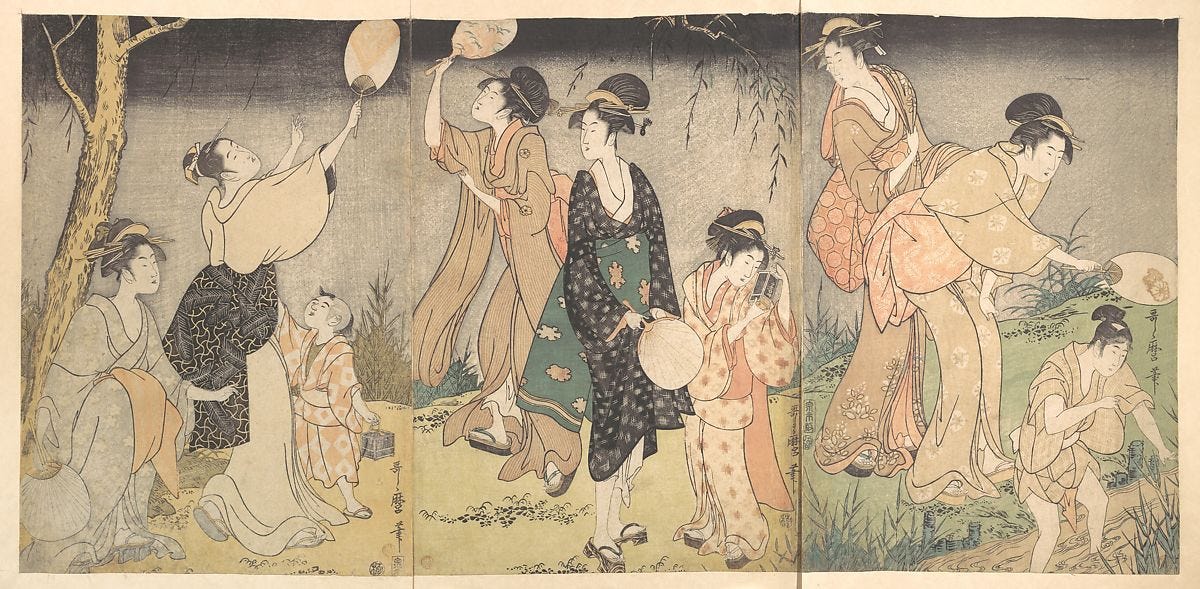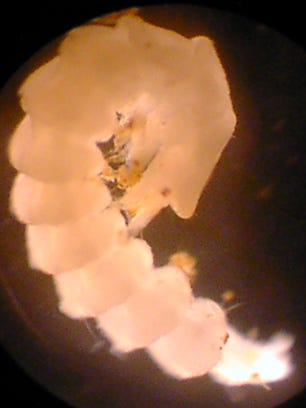
Where we live, we start to see fireflies (or lightning bugs, as people in the South call them) in early June—that means we’ve been enjoying their magical light shows for about two weeks now. Like Mamie, we always look forward to firefly season.
The best time to watch fireflies is dusk—right when it starts to get dark. Choose a dark spot in your yard or a park, and you may see a flash of light, then another.
We have exactly the kind of yard fireflies like. A lot of trees, a clear understory (so they can see each other), and decaying logs and tree stumps (helping produce food for firefly larvae) make for firefly paradise.
Here are some of the cool things we learned recently about these brilliant insects:
Fireflies aren’t flies, and lightning bugs are not true “bugs”—they’re actually beetles. This means that they have hardened wing cases that open for liftoff, exposing the flexible wings underneath. There are more than 2,000 species of fireflies all around the world, on every continent except Antarctica. It’s possible—even likely—that when you watch them flash in your yard, you’re watching more than one species at a time.
Clyde Sorenson, an entomologist at NC State, writes about the diversity and ecology of our North Carolina fireflies. He explained how fireflies glow:
Fireflies produce light in special organs in their abdomens by combining a chemical called luciferin, enzymes called luciferases, oxygen and the fuel for cellular work, ATP. Entomologists think they control their flashing by regulating how much oxygen goes to their light-producing organs.
Flash patterns indicate the fireflies’ species, so that they can find the appropriate mates. In most species, both male and female fireflies will flash, but the males will often be the ones flying around, while the female are more likely to wait on a leaf or a tree (some female fireflies don’t fly well—or at all—while others fly as well as the males).
Fireflies spend most of their time as larvae (sometimes called glowworms), which are extremely helpful for gardeners and farmers. They eat other insects we consider pests, like cutworms, aphids, and slugs, helping to keep the ecosystem in balance. As adults, fireflies only live a few weeks to a month—and some of these adults also eat insects we don’t love to have around.
The enzyme that helps make light in a firefly, luciferin, has also been used in promising cancer research. In some studies, genes connected to firefly bioluminescence are inserted into cancer cells. These cells light up, causing their own death. In other studies, these genes help scientists better track cancerous cells.
Firefly lights are the most efficient lights in the world. One hundred percent of their energy is produced as light. Unlike old-fashioned incandescent light bulbs (which only emit 10% of their energy as light) or florescent lights (which emit 90% of energy as light), fireflies emit no heat—scientists call their light cold light, because it produces no heat.
In some firefly species, the larvae and eggs also glow. Here is a photo Bea found (from firefly.org) of a glowing firefly larvae emerging from the egg:
Some species even synchronize their flashing lights to attract mates, creating amazing all-natural light shows:
In Japan (Bea’s favorite country to research), fireflies are so respected that they have whole festivals and parks set aside for them, and the people who love watching them. They symbolize the changing of the seasons and the start of summer.
Bea wants you to know that fireflies are in danger—threatened by light pollution, habitat destruction, pollution, pesticides, and climate change. That’s a lot of threats! But luckily, it’s easy to make a difference and see more fireflies in your yard. We’ll talk more on Friday about some easy ways to help these magical, start-of summer insects…
What about you, Frog Troublers? Have you seen many fireflies this year? Do you notice a decline in their number, a shift in when they appeared? Have you ever seen the synchronous fireflies in the Great Smoky Mountains?





when we were kids and lightning bugs were everywhere my brother Skip and my cousin Sam and i caught a jar full and snuck them into the Memrose theatre in Norfolk and released during showing of movie! you should’ve seen the amazed
moviegoers watching our light show!!!
There are so many fewer lightning bugs than when I was a child! It makes me sad, for sure.